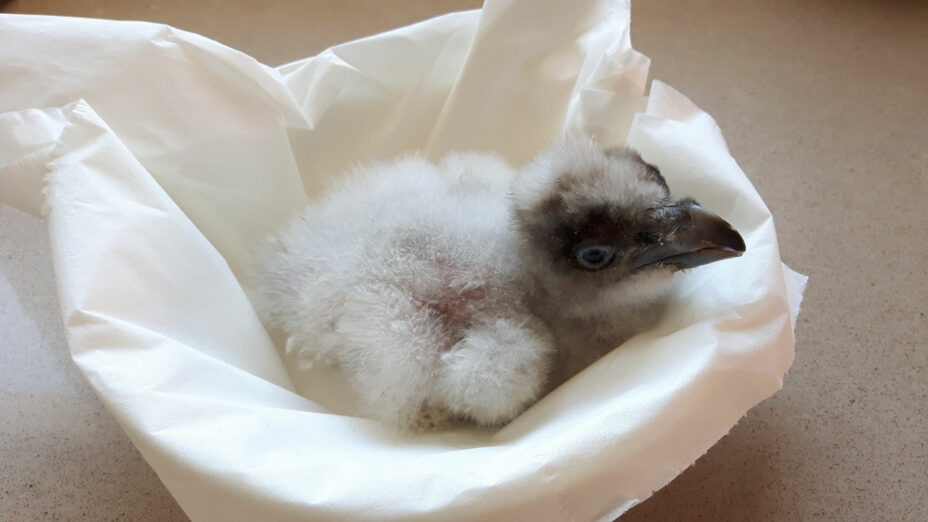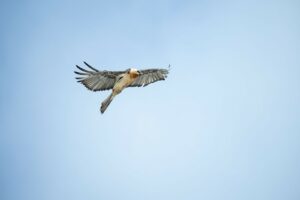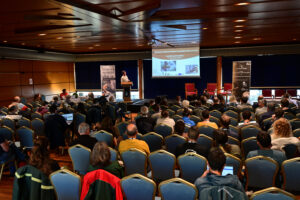life gyprescue
Rescue of the Bearded vulture in Corsica
- Página inicial
- Páginas
- Projects
- LIFE GYPRESCUE

| Project period | 1 October 2021 to 30 June 2025 |
|---|---|
| Project area | Corsica |
| Target species | Bearded Vulture |
The Bearded Vulture (Gypaetus barbatus), an iconic species in Corsica, faces a severe threat of extinction due to declining population numbers and habitat challenges. There are few places in Europe where Bearded Vulture autochthonous populations still exist, and Corsica is one of them. The Bearded Vulture population in Corsica represents the last surviving genetic pool of a former meta-population that included Sicily, Sardinia, Corsica, and the Alps.
Unfortunately, the Bearded Vulture population on the island has suffered a steep decline over the past 25 years, with the number of breeding pairs and fledglings produced each year rapidly decreasing. This dramatic decline is due to a combination of threats including low genetic variability, inbreeding, mortality from human activities such as shooting and poisoning, a significant decrease in natural food sources, and random demographic events caused by the very low number of individuals. The population's fragmentation and isolation have further exacerbated these issues, making conservation efforts even more crucial.
In response to these challenges, the "LIFE GYPRESCUE" project was launched with the primary goal of averting the extinction of the Bearded Vulture in Corsica. This ambitious project aims to revitalize natural reproduction and expand the island's capacity to support this critically endangered species. The project involves a comprehensive approach that includes strengthening the existing population, improving feeding practices, mitigating risks of poisoning and electrocution, and fostering public awareness and engagement.
LEARN MORE ABOUT THE TARGET SPECIES
With funding from the European Union’s LIFE programme, the LIFE GYPRESCUE project team will implement population reinforcement, ex-situ conservation, enhanced feeding strategies, and risk mitigation for poisoning and electrocution to prevent the disappearance of the species on the island.
STRENGTHENING THE POPULATION
To counter the boost the low population of Bearded Vultures in Corsica, the project plans on releasing captive-bred juveniles to the wild. Four young vultures, two males and two females, are planned for release. This includes pre-flight monitoring to ensure their health and post-flight tracking to observe their adaptation and development.

EX-SITU CONSERVATION
Ex-situ conservation efforts aim to preserve the genetic diversity of Corsican Bearded Vultures. This involves collecting eggs, incubating them artificially, and rearing chicks in captivity. These chicks will be integrated into the European Endangered Species Programme (EEP) to maintain genetic variability and support future reintroductions.

FEEDING RESOURCES
The project establishes a network of feeding plots to ensure consistent food availability for Bearded Vultures. This network supports the physiological health of all age classes, boosts reproductive success, and encourages the settlement of new pairs. Additionally, the initiative promotes the sustainable management of wild ungulate and domestic livestock populations, essential food sources for the vultures.

REDUCING THE RISK OF POISONING
Efforts to reduce poisoning risk include surveying veterinary medicines used on farms and promoting lead-free hunting ammunition. By working closely with local hunters and farmers, the project aims to minimize the risk of chemical intoxication and lead poisoning, which pose significant threats to necrophagous birds like the Bearded Vulture.

PREVENTING COLLISION AND ELECTROCUTION
To prevent collision and electrocution, the project is working on securing dangerous power lines. This involves grounding cables, installing bird diverters, and neutralizing high-risk transformers. These measures aim to protect the Bearded Vulture and other raptors from deadly accidents with power infrastructure.

The LIFE GYPRESCUE project is led by Parc naturel régional de Corse, in collaboration with Ligue pour la Protection des Oiseaux, Direction des systèmes énergétiques insulaires, Fédération des Chasseurs de la Corse du Sud and us at the Vulture Conservation Foundation.
For more information, visit the Life GYPRESCUE website.

The LIFE GYPRESCUE project (LIFE20 NAT/FR/001553) is co-financed by the LIFE programme of the European Union. The project duration is 5 years, from October 2021 to June 2025. The total budget is €3,152,116, with the European Union contributing €1,923,681.
The opinions expressed in the news are those of the author only and do not necessarily reflect those of the European Union or CINEA. Neither the European Union nor the grant provider can be held responsible for them.
Latest project news
The Bearded Vultures (Gypeatus Barbatus) of Corsica began their 2025...Read More
The Bearded Vulture (Gypeatus Barbatus) is one of the most...Read More
After a temporary stay at the Parc Naturel Régional de...Read More
On 7-8 November 2024, Parc naturel régional de Corse, hosted...Read More
The eagerly awaited International Bearded Vulture Meeting and LIFE GYPRESCUE...Read More
As the Bearded Vultures prepare for a new breeding season...Read More
People in Corsica warmly welcomed the two young female Bearded...Read More
As the Bearded Vultures prepare for a new breeding season...Read More
Academic and non-academic collaboration is key in addressing complex conservation...Read More










